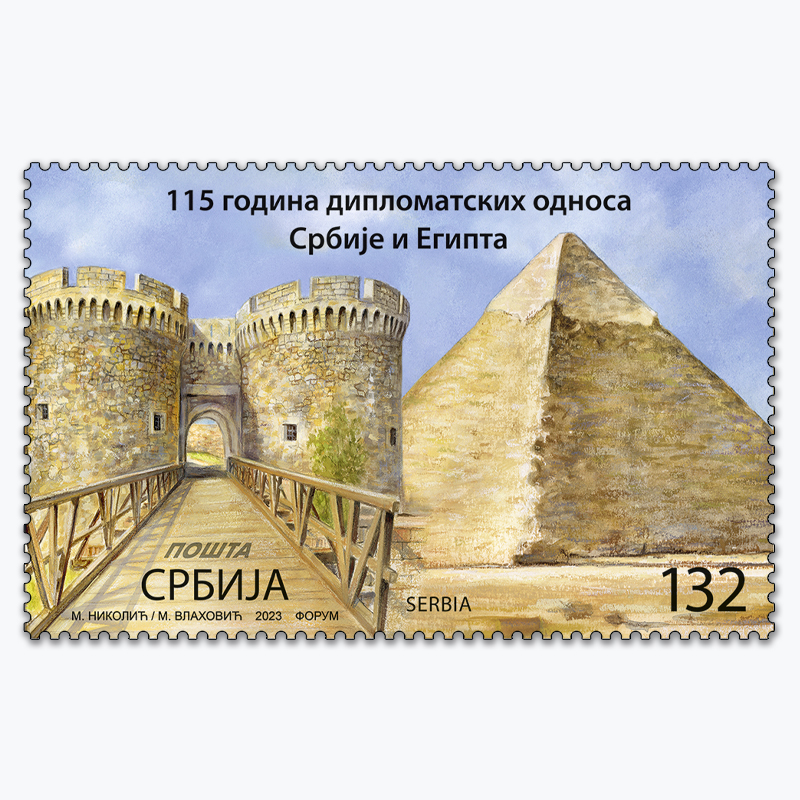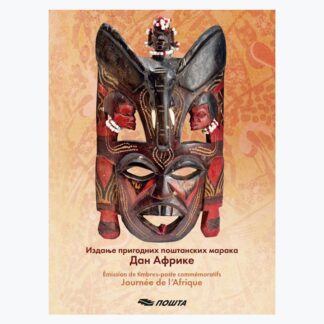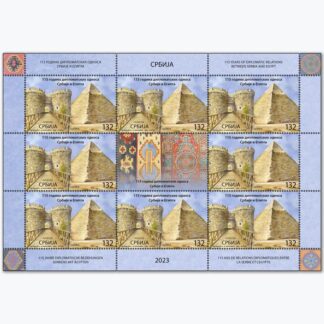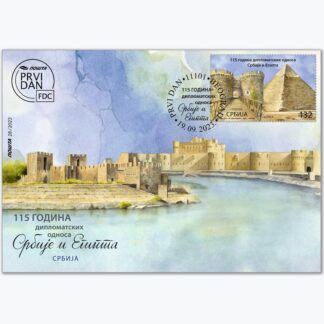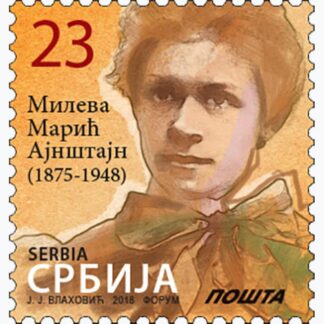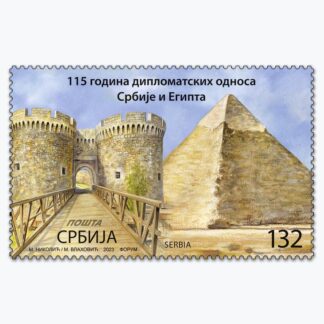Description
The long tradition of diplomatic and friendly relations between Serbia and Egypt and their two peoples, which dates back to 1908, is based on strong economic and political ties, a tradition of good relations and identical goals and views through a long history of cooperation during which the two nations shared important historical moments.
The Kingdom of Serbia opened a consulate in Cairo as early as 1908, and with the independence of Egypt in 1922, the consulate was raised to the level of a general consulate, and in 1926 it received the status of an embassy. The first chargé d’affaires of the then Kingdom of Serbs, Croats and Slovenes in Egypt was Jovan Dučić. Until the end of the Second World War and immediately after, the relations between the two countries had occasional oscillations, but after the establishment of the Arab Republic of Egypt in 1952, the relations between the two countries took an upward path. The heads of state at the time, Josip Broz Tito and Gamal Abdel Nasser, established a strong friendship between the two countries and exceptional personal relations by sharing, as the founders of the Non-Aligned Movement together with the President of India Jawaharlal Nehru, a common vision of the world in which the Non-Aligned Movement was a counterweight to the block division of the world, colonialism and arms race.
The relations between the two countries in the 21st century experienced a new momentum, and the traditional friendly ties of the two peoples and good economic cooperation between the two countries, especially in the fields of tourism, agriculture and economy, but also information and communication technologies, received a new impulse with the recent historic visit of the Egyptian president Abdel Fattah al-Sisi to Belgrade.
Motif on the stamp: Zindan gate on Kalemegdan and Pyramid of Khafre in Giza. Motif on the envelope: Smederevo fortress in Smederevo and Citadel of Qaitbay in Alexandria.
Expert collaboration: Embassy of Egypt in Belgrade, Serbia Artistic realization of the issue: Miroslav Nikolić Graphic realization of the issue: MA Marija Vlahović, academic graphic artist
